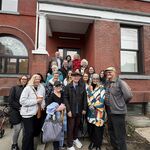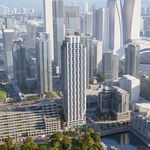That is plenty of room for growth.
For where? Not for *circumventing the load on the present subway it was never designed for*. Anyone thinking extending the present groaning yesterday's subway further out to the nether regions in lieu of regional rail is a good idea is a supporter of Doug Ford. It was never meant to handle that, and it never will as is. Extensions are *exacerbating the very reason touted for the Pape south relief case exists in the first place*. Eglinton Crosstown does the opposite, albeit it too will further load legs of the present subway Line 1. That's something to cater for, and will again max out the present groaning subway infrastructure not designed for serving the regions.
Not to mention it's based on the rather callous and silly assumption that we'll simply shutter a 4km section of long-existing commuter rail, shutter 8km of new track and a brand new station (gormely), and stop work on Bloomington which is quite far along in construction. Sort of gas plant-ish. I get upgrading a commuter rail line to subway standards. Not tossing a rail line aside. This resulting in, what, two subway lines to an outer suburban area all the while we have swaths of the real city dying for major upgrades to transit or SSE getting only one station. Doesn't add up.
It doesn't "add up" because like many Toronto centric persons, you miss the bigger picture as is being done in many world leading cities.
You *feed* that traffic into the Relief Line tunnel. The whole Bala line *remains*. What is now extant below Don Mills becomes a direct express peak service to Union below Don Mills as it now is and for any other existing heavy rail needs. The DD stock won't fit in a 6.5 metre bore. Single decker emu that runs on standard UIC height 25 kV AC catenary can and does! In Toronto's case, I recommend a slightly larger bore, but Crossrail and other European cities do it in a bore size now standard for later Toronto subway tunnels. Paris even does DD in that size bore! Sydney slightly larger IIRC.
South of Don Mills, the *RER electric single decker stock* a la Crossrail and a number of other European cities, using *off the shelf Bombardier and competitor tried and trued high platform stock* is run in tunnel to the core of Toronto and eventually looped back out the west end to the Georgetown Corridor, relieving the subway, relieving Union Station, and much better serving the core with a direct *one seat* ride to the burbs without even needing to use the subway in any shape or form. The diesel and DD stock continues to run where it now does, and the line north of Don Mills is shared with RER.
This type of mixed stock, alternate destination exists in New York as well as many European and Asian cities. Why it's so abstract to Torontonians is symptomatic of...creating their own conundrums by thinking small.
"Subways, subways, subways". He isn't talking LRT let alone RER in tunnel...He's talking the past.





